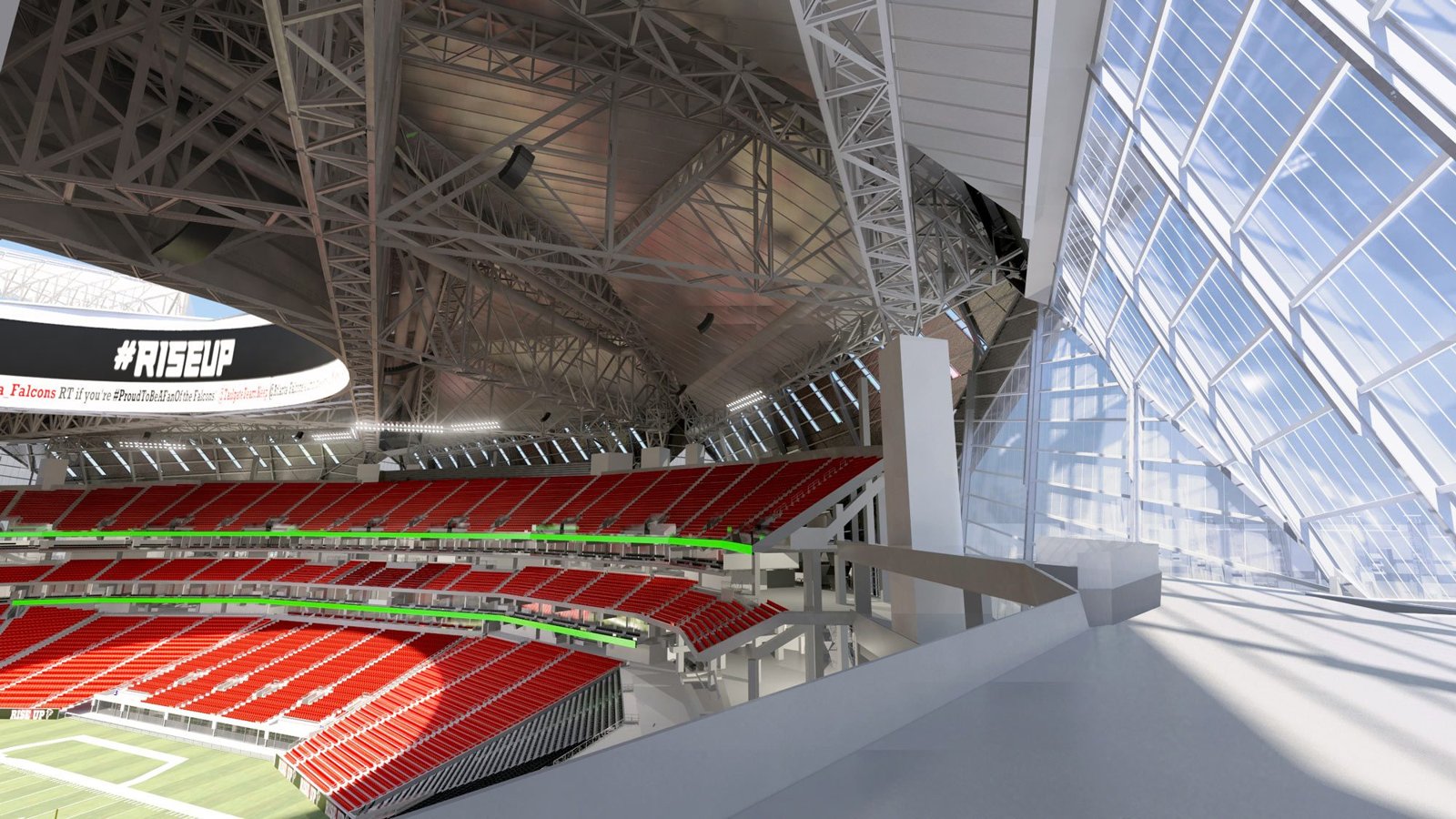

The History of the Atlanta Falcons StadiumĮver since the Atlanta Falcons have been a professional football team, the team has played in the Georgia Dome. Here are some ways to explain the Atlanta Falcons Stadium and its history to interested readers. However, regardless of your opinion on the stadium, one thing is certain: it’s an impressive structure that stands out in the Atlanta skyline. For sports fans, this is good news for others, it’s not. The stadium not only has a capacity of 72,000, but it also cost $1.2 billion to design and construct. The middle concourse and upper bowl were eliminated in the east end zone to allow for an unobstructed view of the Atlanta skyline.When the Atlanta Falcons Stadium was announced, it was met with mixed reactions.

The Stadium features a circular 58-by-1,100-foot (18 by 335 m) LED board that rings the opening of the stadium's roof, and would be three times as large as the current largest single display board in the NFL.Īrchitect Bill Johnson said the circular opening in the roof was inspired by the Roman Pantheon. The roof was designed to be made of a clear, lightweight polymer material that can adjust its opacity to control light, and much of the exterior will be clear polymer or glass to allow views to the outside. Surrounding the opening of the roof would be a halo video board that would enclose the playing surface, stretching from one of the 10-yard lines to the other and then curving around the end zones to complete the oval. Each of the eight panels operates on two straight, parallel rails one rail is responsible for moving the panel while the other rail stabilizes the panel. The roof design included eight triangular translucent panels, that when opened would create the illusion of a bird's wings extended. The winning design, submitted by HOK, featured an eight-panel retractable roof that resembled a pinwheel, and a glass wall that would open with the roof to allow in fresh air. Supermetal was responsible for fabricating large complex trusses used to connect the roof system. A new 72,000-seat retractable roof stadium for hosting NFL games and other sporting events.


 0 kommentar(er)
0 kommentar(er)
